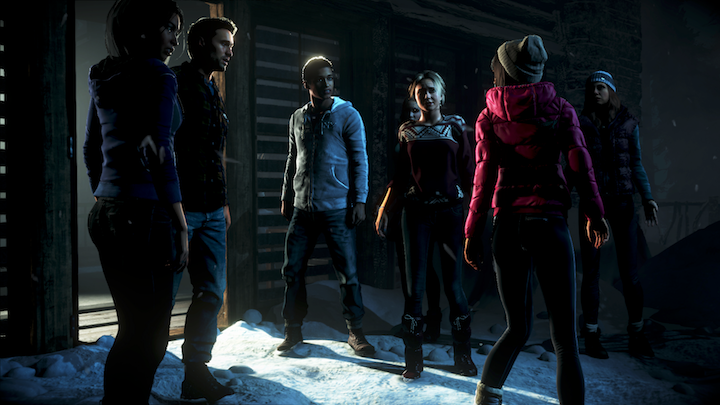Fresh from multiple narrative and writing based GDC panels, my head has been full of theories on best incorporating narrative into game design and all the ways narrative reveals itself in games. At one writing roundtable today, an attendee proposed a question on how to explore and build a game’s world without relying on lengthy text or an off-putting amount of exposition. Both precision and efficiency were stressed – every piece of dialogue or narration should contribute in some way towards expanding the game’s universe or characters and that worlds are first and foremost a tool for advancing story. But that holds true in most any literary or narrative medium really. But what I thought was largely missing from this discussion were any theories on how games, given their natural interactivity, can flush out their worlds in ways more traditional narrative mediums can’t. Although theoretically possible, it’s difficult to get all the aspects of your fictional universe’s world you might have planned out into your actual work. For instance, in Bioware’s Mass Effect series, a player can explore a number of planets in the game’s universe in between essential plot points or missions. Doing so may reveal side missions that, while they might not advance the core story per say, contribute to a player’s understanding of the game universe’s history and leave a player better informed of the position the playable character(s) are in. But at the same time, these extra bits are entirely optional – a player may choose to participate at their own discretion. This is something that’s largely impossible to achieve in traditional novels, for instance, where readers progress in an entirely linear path. Games, given their interactivity, have the option to allow players to explore their surroundings as much or as little as they want.
When thinking of contextual world building based on interactivity, I can’t help but think of Dontnod Entertainment’s Life is Strange, which we discussed at length as a group in a previous podcast. I wont lie, the game does not succeed on all narrative fronts: some of the dialogue comes off unrealistic and cheesy, certain subplots feel as if they’d belong in a Hollywood-produced representation of high school life and drama, and the it feels as if the player character is wobbling the line of being a defined character or a blank slate for players to project themselves on. But I believe it is Life is Strange’s subtle but potent way of offering insight into the little town of Arcadia Bay that was perhaps one of the game’s most captivating and resonating elements for me (alongside the realistic ‘no-single-best option’ narrative choices).
One of the first things you notice in Life is Strange once you start exploring the school are the missing person posters. They’re up on nearly every cork board and door and are fairly difficult to miss. This was a point I already mentioned in our podcast, but the sheer number and presence of these posters oddly resonated with me. I was instantly reminded of how Indiana University’s campus looked even over a year after student Lauren Spierer went missing from the surrounding area. Although this was a few years ago, I remember thinking about how much effort someone must have gone through to put all of these posters up, and how, after upwards of a year or more having passed since the day she was last seen, almost hopeless and in vain the act seemed. As I went from board to board in the game looking at all of these posters, these memories came flooding back. However it’s only after you learn that it was very likely Chloe, the main character’s childhood best friend, who put up the posters that this small detail really resonates. This potentially skippable detail, when pieced together with information you learn further on in the game, offers a great deal of insight into the relationship with the girl in the posters, Rachel Amber. Although, yes, a similar effect could probably be explored in traditional forms of fiction, there is a certain something about going up to each poster that makes it all the more real and impactful. It’s moments like this, and, for instance, things like discovering Chloe’s step dad’s hidden camera feed, that uniquely allow you to explore Arcadia Bay’s cast of characters and the “status quo,” if you will, of the school and town.
Life is Strange’s core time travel mechanic also lends itself well towards world exploration. After all, how often are you able to explore every dialogue option without having to start a new game or restarting a checkpoint? Seamlessly being able to rewind and fast-forward grants players the ability to learn as much information as possible from the game’s cast of characters without having to wonder about what answers or exposition the other choice might have yielded. Much of the game’s most interesting clues and bits of information are completely missable and only there if one actively explores.
So how is this a particularly well done example of worldbuilding? Well, I’d say that really rests in how much is available to learn if you go looking for it. These are elements that are not particularly necessary to understanding or advancing the game’s story and plot, but offer just enough insight so as to build a more complete picture of the game’s universe and world (for instance, the fact that Dana Ward was pregnant and most likely had an abortion). These are details that might be considered “excess” in other narrative mediums or may be inaccessible given the story’s point of view (after all, I could rewind after snooping on Dana’s pregnancy test, and really, who outside of a video game would just start snooping around someone’s room while they’re still in it?), but are enjoyable little bits of information that improve the player’s experience playing the game, as Life is Strange’s small details improved mine. Because taking advantage of a game’s natural interactivity and exploration mechanisms allows for a whole new way to approach not only worldbuilding, but an interaction between writing and design as well.




